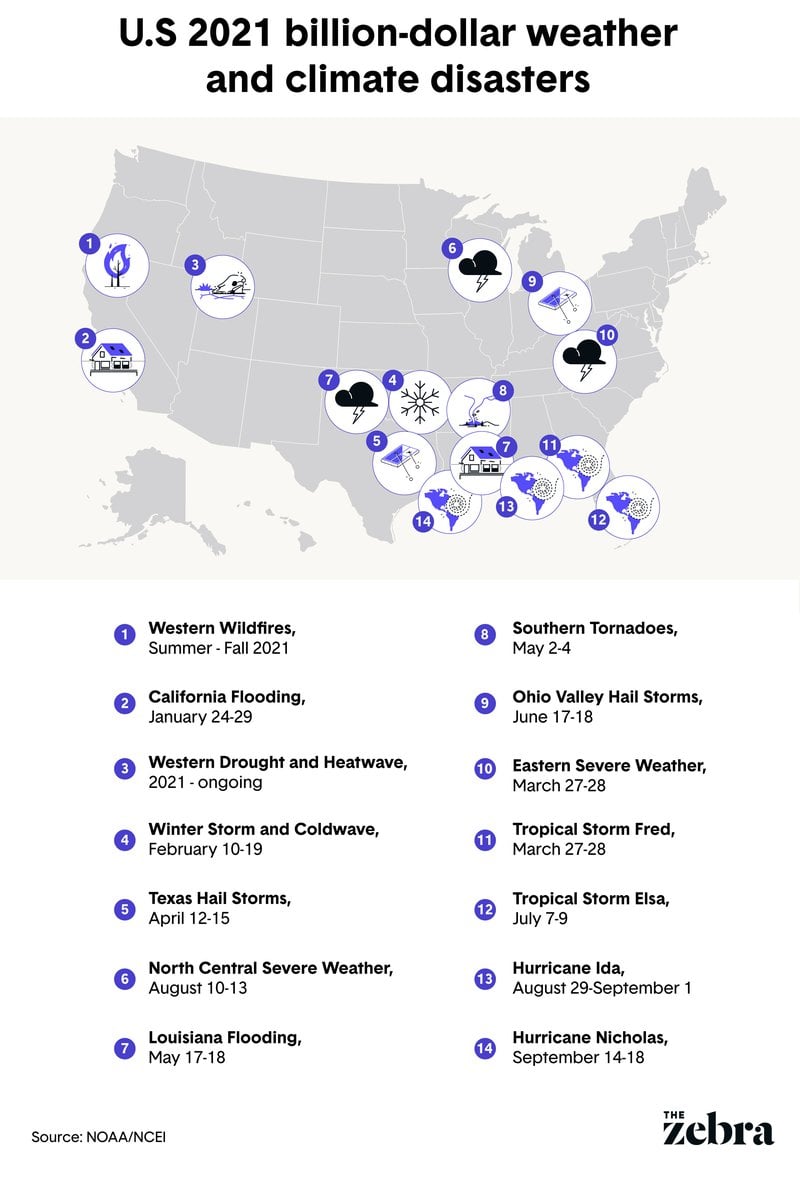Climate change has caused a string of weather-related reprucussions globally. In the U.S., many regions are facing an increased number of severe weather events, such as droughts and tornadoes. And these changes are impacting the people who live there, with 30% of Americans citing climate change as a compelling reason to move.
The map below shows some of the weather events that impacted the U.S. in the past year. As you can see the affects are spread across much of the country.

If people really are willing to uproot themselves to find a home that’s better prepared for major weather changes while also offering a healthy environment, where should they go? The Zebra looked at five factors to find out.
- EPA’s Cumulative Resilience Screening Index for Natural Hazards: The CRSI scores a city’s ability to withstand and recover from a natural disaster.
- Number of high ozone days each year: A high ozone day means that current weather conditions in an area paired with the level of air pollution are close to the ground and can have negative health effects.
- Weighted average of daily particle pollution: Particle pollution comes from a variety of sources and makes the air less healthy to breathe. Common culprits causing higher particle pollution include vehicle exhaust fumes and coal-fired power plants.
- Number of $1billion+ weather and climate disasters in 2021: As weather patterns change, many regions are also experiencing an increased number of severe storms and other events. This can cause an enormous amount of damage to communities, including homes, businesses, and schools. The $1 billion threshold is not just for one state, but one weather event that may have impacted multiple states.
- Global sea level risk level: Rising global sea levels due to melting glaciers increase the risk of flooding in coastal cities. Cities were ranked based on the percent chance of at least one flood over six feet taking place by 2050.
Keep reading to find out which cities made the list as the best options for dealing with climate change.

